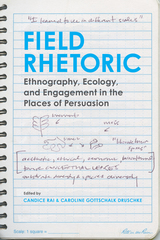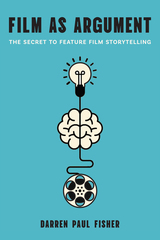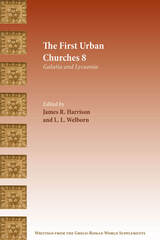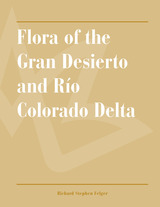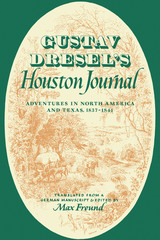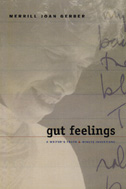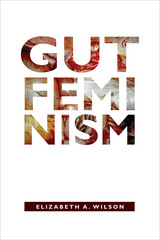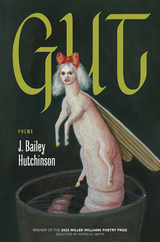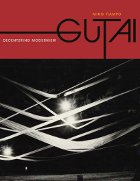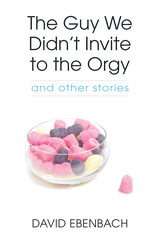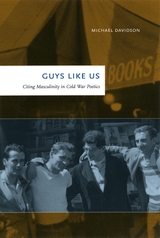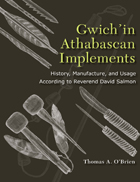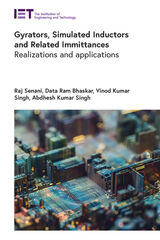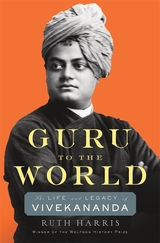 Guru to the World: The Life and Legacy of Vivekananda
Ruth Harris
Harvard University Press, 2022 From the Wolfson History Prize–winning author of The Man on Devil’s Island, the definitive biography of Vivekananda, the Indian monk who shaped the intellectual and spiritual history of both East and West.
Few thinkers have had so enduring an impact on both Eastern and Western life as Swami Vivekananda, the Indian monk who inspired the likes of Freud, Gandhi, and Tagore. Blending science, religion, and politics, Vivekananda introduced Westerners to yoga and the universalist school of Hinduism called Vedanta. His teachings fostered a more tolerant form of mainstream spirituality in Europe and North America and forever changed the Western relationship to meditation and spirituality.
Guru to the World traces Vivekananda’s transformation from son of a Calcutta-based attorney into saffron-robed ascetic. At the 1893 World Parliament of Religions in Chicago, he fascinated audiences with teachings from Hinduism, Western esoteric spirituality, physics, and the sciences of the mind, in the process advocating a more inclusive conception of religion and expounding the evils of colonialism. Vivekananda won many disciples, most prominently the Irish activist Margaret Noble, who disseminated his ideas in the face of much disdain for the wisdom of a “subject race.” At home, he challenged the notion that religion was antithetical to nationalist goals, arguing that Hinduism was intimately connected with Indian identity.
Ruth Harris offers an arresting biography, showing how Vivekananda’s thought spawned a global anticolonial movement and became a touchstone of Hindu nationalist politics a century after his death. The iconic monk emerges as a counterargument to Orientalist critiques, which interpret East-West interactions as primarily instances of Western borrowing. As Vivekananda demonstrates, we must not underestimate Eastern agency in the global circulation of ideas.
 Gurus and Media: Sound, Image, Machine, Text and the Digital
Edited by Jacob Copeman, Arkotong Longkumer, and Koonal Duggal
University College London, 2023 The first book dedicated to media and mediation in domains of public guruship and devotion.
Illuminating the mediatization of guruship and the guruization of media, this book bridges the gap between scholarship on gurus and the disciplines of media and visual culture studies. It investigates guru iconographies in and across various time periods and also the distinctive ways in which diverse gurus engage with and inhabit different forms of media: statuary, games, print publications, photographs, portraiture, films, machines, social media, bodies, words, graffiti, dolls, sound, verse, tombs, and more.
The book’s interdisciplinary chapters advance, both conceptually and ethnographically, our understanding of the function of media in the dramatic production of guruship and reflect on the corporate branding of gurus and on mediated guruship as a series of aesthetic traps for the captivation of devotees and others. They show how different media can further enliven the complex plurality of guruship, for instance in instantiating notions of “absent-present” guruship and demonstrating the mutual mediation of gurus, caste, and Hindutva.
Gurus and Media foregrounds contested visions of the guru in the development of devotional publics and pluriform guruship across time and space. Thinking through the guru’s many media entanglements in a single place, this book contributes new insights to the study of South Asian religions and to the study of mediation more broadly.
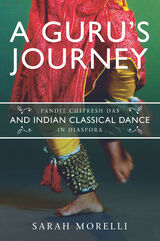 A Guru’s Journey: Pandit Chitresh Das and Indian Classical Dance in Diaspora
Sarah Morelli
University of Illinois Press, 2019 An important modern exponent of Asian dance, Pandit Chitresh Das brought kathak to the United States in 1970. The North Indian classical dance has since become an important art form within the greater Indian diaspora. Yet its adoption outside of India raises questions about what happens to artistic practices when we separate them from their broader cultural contexts. A Guru's Journey provides an ethnographic study of the dance form in the San Francisco Bay Area community formed by Das. Sarah Morelli, a kathak dancer and one of Das's former students, investigates issues in teaching, learning, and performance that developed around Das during his time in the United States. In modifying kathak's form and teaching for Western students, Das negotiates questions of Indianness and non-Indianness, gender, identity, and race. Morelli lays out these issues for readers with the goal of deepening their knowledge of kathak aesthetics, technique, and theory. She also shares the intricacies of footwork, facial expression in storytelling, and other aspects of kathak while tying them to the cultural issues that inform the dance.
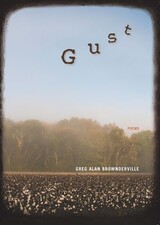 Gust: Poems
Greg Alan Brownderville
Northwestern University Press, 2011 Irresistible in its color and momentum, Greg Alan Brownderville's debut collection explores the competing mysticisms of his boyhood: the Voudou of his native Arkansas Delta and the Pentecostalism embodied by his devil-hunting pastor, Brother Langston. On the one hand, "gust" sonically suggests "ghost," and wind is a metaphor for inspiration and the Holy Spirit. On the other hand, "gust" suggests urge and pleasure, especially of the gastronomic variety, thus evoking the body.
Brownderville commands the complex eloquence of Southerners who love not only local color but also high-flown rhetoric. Instead of reinforcing stereotypes about rural folks' thought and speech, he challenges our assumptions by presenting real life as a festival of mixed diction. Church, as Brownderville enacts it, both quickens and forbids the erotic, whose lightning flashes and crashes everywhere in these poems. Highlights include a press conference with a bizarrely poetic rural sheriff, a Zimbabwean meter never before employed in English, a rock and roll song interrupted by a Walmart intercom, and poems about the exploitation of Italians in Arkansas cotton fields.
At once evoking Yeats and Whitman, Gust recovers the dramatic mode often neglected in contemporary American poetry. Brownderville's uncanny lyricism storms through stories that are both moving and humorous.
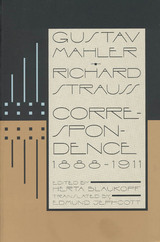 Gustav Mahler--Richard Strauss: Correspondence 1888-1911
Gustav Mahler and Richard Strauss
University of Chicago Press, 1984 Gustav Mahler and Richard Strauss came to know one another as young conductors in Leipzig in 1887. From then until Mahler's death in 1911—the year of the first performance of Der Rosenkavalier—they kept in touch. Mahler himself described their relationship as that of two miners tunneling from opposite directions with the hope of eventually meeting.
This first publication of their correspondence, which includes twenty-five previously unknown Strauss letters, offers a portrait of two men who were as antithetical in their musical means and goals as in their temperaments and personalities, but who exercised a strong fascination for one another. These sixty-three letters show both composers advancing in their careers as they battled against adverse conditions in the musical world at the turn of the century. They present Mahler's energetic support of Strauss's Symphonia Domestica, which Mahler conducted in 1904 and, in turn, Strauss's championing of Mahler's music, especially the Second and Third Symphonies.
The correspondence is fully annotated and is supplemented with a major essay by Herta Blaukopf.
"Unfailingly absorbing. . . . An indispensable addition to the literature on these composers."—Norman Del Mar, Times Literary Supplement
 Gustave Caillebotte and the Fashioning of Identity in Impressionist Paris
Edited by Norma Broude
Rutgers University Press, 2002 Over the last decades, Gustave Caillebotte (1848–1894), a long-neglected painter associated with the French Impressionists, has suddenly become the subject of intense public interest and renewed scholarly debate. With a series of important exhibitions recently showcasing his work, Caillebotte’s enigmatic paintings have begun to exert an unexpected fascination for postmodern audiences, and they have become rich sites for interpretive debate. The essays that comprise this volume exemplify the best aspects of recent Caillebotte scholarship. They employ a variety of perspectives to examine the ways in which his art sheds light on the formation of individual and class identities in Paris during the early years of the Third Republic—an era of transition marked by the burgeoning of capitalism and the instabilities of newly shifting gender roles in the modern world. Addressing a wide range of major paintings by Caillebotte, the contributors reveal the compound ways in which the artist encoded his images and the multiple interpretations to which these images are susceptible. Juxtaposed so as to complement and challenge one another, these essays build a provocative whole as they probe issues of spectatorship and authorial intention. The contributors—all internationally known scholars and art professionals—create an important theoretical framework for the discussion of Caillebotte’s work.
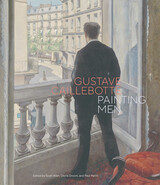 Gustave Caillebotte: Painting Men
Scott Allan
J. Paul Getty Trust, The, 2024 This richly illustrated volume paints a complex portrait of Caillebotte, masculinity, and identity in late nineteenth-century France.
More than any other French Impressionist, painter Gustave Caillebotte (1848–1894) observed and depicted the many men in his life, including his brothers and friends, employees, and the workers and bourgeois in his Parisian neighborhood. Male subjects feature prominently in some of his best-known works, such as The Floor Scrapers, Man at His Bath, Young Man at His Window, Boating Party, and Paris Street, Rainy Day. The originality of his paintings of men is fully explored for the first time in this catalogue, published to accompany a major international exhibition co-organized by the J. Paul Getty Museum, Musée d’Orsay, and the Art Institute of Chicago.
Alongside paintings, drawings, and photographs, as well as an appendix featuring maps and new biographical research that sheds light on Caillebotte’s social network, this volume includes historically grounded thematic essays by curators and leading scholars. By exploring the complex and varied facets of Caillebotte’s identity—as son, brother, soldier, bachelor, amateur, sportsman, and so on—these essays pose questions of identity, leaving space for ambiguous and fluid expressions of gender and masculinity—for both Caillebotte and the larger late nineteenth-century French world.
This volume is published to accompany an exhibition on view at the Musée d’Orsay from October 8, 2024, to January 19, 2025, J. Paul Getty Museum at the Getty Center from March 25 to May 25, 2025, and The Art Institute of Chicago from June 29 to October 5, 2025.
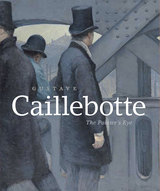 Gustave Caillebotte: The Painter's Eye
Mary Morton and George Shackelford
University of Chicago Press, 2015 Though largely out of the public eye for more than a century, Gustave Caillebotte (1848–94) has come to be recognized as one of the most dynamic and original artists of the impressionist movement in Paris. His paintings are favorites of museum-goers, and recent restoration of his work has revealed more color, texture, and detail than was visible before while heightening interest in all of Caillebotte’s artwork. This lush companion volume to the National Gallery of Art’s major new exhibition, coorganized with the Kimbell Art Museum, explores the power and technical brilliance of his oeuvre.
The book features fifty of Caillebotte’s strongest paintings, including post-conservation images of Paris Street; Rainy Day, along with The Floorscrapers and Pont de l’Europe, all of which date from a particularly fertile period between 1875 and 1882. The artist was criticized at the time for being too realistic and not impressionistic enough, but he was a pioneer in adopting the angled perspective of a modern camera to compose his scenes. Caillebotte’s skill and originality are evident even in the book’s reproductions, and the essays offer critical insights into his inspiration and subjects.
This sumptuously illustrated publication makes clear why Caillebotte is among the most intriguing artists of nineteenth-century France, and it deepens our understanding of the history of impressionism.
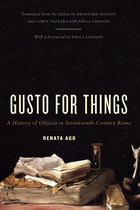 Gusto for Things: A History of Objects in Seventeenth-Century Rome
Renata Ago
University of Chicago Press, 2013 We live in a material world—our homes are filled with things, from electronics to curios and hand-me-downs, that disclose as much about us and our aspirations as they do about current trends. But we are not the first: the early modern period was a time of expanding consumption, when objects began to play an important role in defining gender as well as social status. Gusto for Things reconstructs the material lives of seventeenth-century Romans, exploring new ways of thinking about the meaning of things as a historical phenomenon.
Through creative use of account books, inventories, wills, and other records, Renata Ago examines early modern attitudes toward possessions, asking what people did with their things, why they wrote about them, and how they passed objects on to their heirs. While some inhabitants of Rome were connoisseurs of the paintings, books, and curiosities that made the city famous, Ago shows that men and women of lesser means also filled their homes with a more modest array of goods. She also discovers the genealogies of certain categories of things—for instance, books went from being classed as luxury goods to a category all their own—and considers what that reveals about the early modern era. An animated investigation into the relationship between people and the things they buy, Gusto for Things paints an illuminating portrait of the meaning of objects in preindustrial Europe.
 Gut
Amanda Larson
Omnidawn, 2021 These poems follow the aftermath of and recovery from trauma.
Amanda Larson’s Gut begins with an epigraph from Frank O’Hara: “Pain always produces logic, which is very bad for you.” From there, Larson launches an unflinching interrogation of how a young woman maintains agency in the wake of trauma, violence, and desire. Larson spins a conversation between works of feminist theory—including the those of Cathy Caruth, Susan Bordo, Patricia Hill Collins, Anne Carson, Hélène Cixous, and bell hooks—and her own experiences. The book moves through Larson’s recovery while questioning the limits of the very term and of language as a whole. She employs a variety of different forms, including prose, Q&A poems, and a timeline, reflecting both the speaker’s obsession with control and her growing willingness to let it go. With a measured voice, Larson finds a path for how to move beyond logic during processes of trauma and recovery.
Gut won the Omnidawn 1st/2nd Book Contest, selected by Jericho Brown.
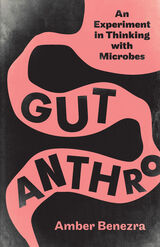 Gut Anthro: An Experiment in Thinking with Microbes
Amber Benezra
University of Minnesota Press, 2023 A fascinating ethnography of microbes that opens up new spaces for anthropological inquiry
The trillions of microbes in and on our bodies are determined by not only biology but also our social connections. Gut Anthro tells the fascinating story of how a sociocultural anthropologist developed a collaborative “anthropology of microbes” with a human microbial ecologist to address global health crises across disciplines. It asks: what would it mean for anthropology to act with science? Based partly at a preeminent U.S. lab studying the human microbiome, the Center for Genome Sciences at Washington University, and partly at a field site in Bangladesh studying infant malnutrition, it examines how microbes travel between human guts in the “field” and in microbiome laboratories, influencing definitions of health and disease, and how the microbiome can change our views on evolution, agency, and life. As lab scientists studied the interrelationships between gut microbes and malnutrition in resource-poor countries, Amber Benezra explored ways to reconcile the scale and speed differences between the lab, the intimate biosocial practices of Bangladeshi mothers and their children, and the looming structural violence of poverty. In vital ways, Gut Anthro is about what it means to collaborate—with mothers, local field researchers in Bangladesh, massive philanthropic global health organizations, with the microbiome scientists, and, of course, with microbes. It follows microbes through various enactments in scientific research—microbes as kin, as data, and as race. Revealing how racial categories are used in microbiome research, Benezra argues that microbial differences need transdisciplinary collaboration to address racial health disparities without reifying race as a straightforward biological or social designation. Gut Anthro is a tour de force of science studies and medical anthropology as well as an intensely personal and deeply theoretical accounting of what it means to do anthropology today.
Cover alt text: Black background overlaid with a pink organic path suggestive of a human digestive system. Title appears within the guts as if being processed.
Gut Feelings: A Writer'S Truths And Minute Inventions
Merrill Joan Gerber
University of Wisconsin Press, 2003 In these highly personal essays and powerful tales that verge on memoir, Merrill Joan Gerber opens to us her life and work as a writer. She is candid and unflinching in revealing the truths and inventions of a writer’s vision and the use of life as the raw material of art. Her personal essays range widely, from the mysteries of love and marriage to painful encounters with suicides and family deaths.
Gerber writes of her apprenticeships with celebrated writing teachers Andrew Lytle and Wallace Stegner and recounts her ghostly (and ghastly) experiences during a month at Yaddo, the famous retreat for artists. Gerber includes three pieces in the book—originally published as stories—but which blur the line between fiction and memoir, demonstrating Gerber’s contention that the deepest secrets in life beget the most passionate fictions.
Gut Feminism
Elizabeth A. Wilson
Duke University Press, 2015 In Gut Feminism Elizabeth A. Wilson urges feminists to rethink their resistance to biological and pharmaceutical data. Turning her attention to the gut and depression, she asks what conceptual and methodological innovations become possible when feminist theory isn’t so instinctively antibiological. She examines research on anti-depressants, placebos, transference, phantasy, eating disorders and suicidality with two goals in mind: to show how pharmaceutical data can be useful for feminist theory, and to address the necessary role of aggression in feminist politics. Gut Feminism’s provocative challenge to feminist theory is that it would be more powerful if it could attend to biological data and tolerate its own capacity for harm.
Gut: Poems
J. Bailey Hutchinson
University of Arkansas Press, 2022 Winner, 2022 Miller Williams Poetry Prize J. Bailey Hutchinson’s Gut is the dazzling debut of a born storyteller. In Hutchinson’s poems, which explore the substance of personal history, family attains the mysterious stature of folklore, while the vast worlds of nature and of the imagination abound with extraordinary creatures that likewise elude full understanding. For the voracious consciousness at work here, inheritance—what it means to be from a particular place and a particular people, no matter how one might strain against that—lies at the very heart of things.
Gutai: Decentering Modernism
Ming Tiampo
University of Chicago Press, 2011 Gutai is the first book in English to examine Japan’s best-known modern art movement, a circle of postwar artists whose avant-garde paintings, performances, and installations foreshadowed many key developments in American and European experimental art. Working with previously unpublished photographs and archival resources, Ming Tiampo considers Gutai’s pioneering transnational practice, spurred on by mid-century developments in mass media and travel that made the movement’s field of reception and influence global in scope. Using these lines of transmission to claim a place for Gutai among modernist art practices while tracing the impact of Japan on art in Europe and America, Tiampo demonstrates the fundamental transnationality of modernism. Ultimately, Tiampo offers a new conceptual model for writing a global history of art, making Gutai an important and original contribution to modern art history.
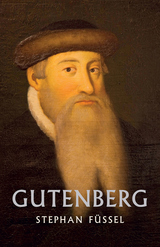 Gutenberg
Stephan Füssel
Haus Publishing, 2019 Named “Man of the Millennium” in 1999, Johannes Gutenberg was the creator of one of the most influential and revolutionary inventions in Europe’s history: a printing press with mechanical movable type. This development sparked the printing revolution, which is regarded as the milestone of the second millennium and represents one of the central contributions in the turn to modernity. His printing press came to play a key role in the development of the Renaissance, the Reformation, and the Age of Enlightenment, providing the material foundation for the modern knowledge-based economy and the spread of learning to the masses. His invention revolutionized the way that information is shared and broadened the boundaries of who has access to written knowledge. Paving the way for bibliophiles of today, the Gutenberg Bible of 1454 remains one of the most famous books in history.
Gutenberg’s technical innovations remained unrivalled for almost 350 years, until industrialization of the printing industry and the digital revolution built on the advances that he began, increasing the rate at which information is spread. Despite his significance in forming the world as we know it, there has not yet been a rigorous and accessible biography of Gutenberg published in English. Written by the leading expert on Gutenberg, Füssel’s biography brings together high academic standards and thorough historical details in a highly readable text that conveys everything you need to know about the man who changed printing forever.
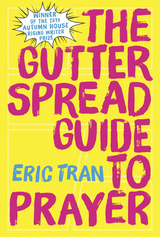 The Gutter Spread Guide to Prayer
Eric Tran
Autumn House Press, 2020 In The Gutter Spread Guide to Prayer, Eric Tran contends with the aftermath of a close friend’s suicide while he simultaneously explores the complexities of being a gay man of color. Grief opens into unraveling circles of inquiry as Tran reflects on the loss of his friend and of their shared identity as gay Asian American men. Through mourning and acute observations, these poems consider how those who experience marginalization, the poet included, may live and fall victim to tragedy. Tran explores how his life, even while in the company of desire and the pursuit of freedom, is never far from danger. Like grief that makes the whole world seem strange, Tran’s poetry merges into fantasy lands and rides the lines between imagined worlds and the reality of inescapable loss. At the intersection of queerness, loss, and desire, Tran uses current events, such as the Pulse nightclub tragedy, pop culture references, and comic book allusions to create a unique and textured poetry debut. He employs an unexpected pairing of prayer and fantasy allowing readers to imagine a world of queer joy and explore how grief can feel otherworldly. This collection shows a poet learning how to be afraid, to feel lost, to grieve, and to build a life amid precarious circumstances. The Gutter Spread Guide to Prayer was the winner of the Autumn House Rising Writers Prize in 2019.
 The Gutter Spread Guide to Prayer
Eric Tran
Autumn House Press, 2020 In The Gutter Spread Guide to Prayer, Eric Tran contends with the aftermath of a close friend’s suicide while he simultaneously explores the complexities of being a gay man of color. Grief opens into unraveling circles of inquiry as Tran reflects on the loss of his friend and of their shared identity as gay Asian American men. Through mourning and acute observations, these poems consider how those who experience marginalization, the poet included, may live and fall victim to tragedy. Tran explores how his life, even while in the company of desire and the pursuit of freedom, is never far from danger. Like grief that makes the whole world seem strange, Tran’s poetry merges into fantasy lands and rides the lines between imagined worlds and the reality of inescapable loss. At the intersection of queerness, loss, and desire, Tran uses current events, such as the Pulse nightclub tragedy, pop culture references, and comic book allusions to create a unique and textured poetry debut. He employs an unexpected pairing of prayer and fantasy allowing readers to imagine a world of queer joy and explore how grief can feel otherworldly. This collection shows a poet learning how to be afraid, to feel lost, to grieve, and to build a life amid precarious circumstances. The Gutter Spread Guide to Prayer was the winner of the Autumn House Rising Writers Prize in 2019.
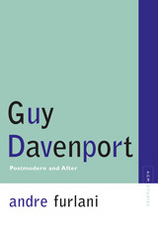 Guy Davenport: Postmodern and After
Andre Furlani
Northwestern University Press, 2007 Guy Davenport (1927–2005), an American writer of fiction, poetry, criticism, and essays, a translator, painter, intellectual, and teacher, brought a breadth and depth of knowledge to his pursuits that few other writers could approach, let alone appraise. In Andre Furlani, this twentieth-century American master has finally found an apt critical reader. In this first sustained critical study of Davenport, Furlani elucidates the depths of Davenport's fiction and its poetic precedents, brings a rare understanding to the author's reworking of twentieth-century literature and intellectual history, and offers unusual insight into his compositional technique. Furlani explores key themes across the spectrum of Davenport's fiction: pastoral utopia; twentieth-century dystopia; sexual ethics; the mythologizing of childhood; the inseparability of the archaic and the modern; and a celebration of the union of sophia, eros, and poesia. Whether Davenport's view of art and the cosmos should be called "postmodern" is a question that Furlani considers closely--offering, finally, a new aesthetic for this American original who, in these pages, at last receives the thorough and meticulous attention he has long merited.
 Guy Hocquenghem: Beyond Gay Identity
Bill Marshall
Duke University Press, 1997 Although Homosexual Desire, first published in French in 1972 and in English in 1978, has become a classic in gay male theory, no full-length study of its author, Guy Hocquenghem, has been available in English until now. From the rise of the international gay liberation movement of the late 1960s to Hocquenghem’s AIDS-related death in 1988, Bill Marshall discusses the arguments and impact of Hocquenghem’s theoretical and political work while situating this work in its biographical, historical, and intellectual contexts.
Marshall explores all aspects of Hocquenghem’s writing—journalistic, theoretical, and fictional—much of this work still untranslated. His consideration reaches beyond the aftermath of the events of May 1968 and points toward the ways in which Hocquenghem’s work might invigorate contemporary debates on a range of issues in Marxist and queer theory and in gay, lesbian, and cultural studies. These include the construction of homosexuality in social discourse, the status of "identity politics," and the role of the state and civil society in the determination of each. Demonstrating Hocquenghem’s importance within the framework of French leftist thought, Marshall links him to his contemporaries Foucault, Deleuze, and Guattari. Tracing his connections to the intellectual traditions of Benjamin, Diderot, Fourier, Lucretius, and Gnosticism, he also illustrates Hocquenghem’s place within the European intellectual tradition.Guy Hocquenghem brings an important, challenging, and overly neglected French theorist back to the main stage.
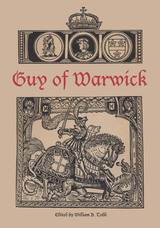 Guy of Warwick
Edited by William B. Todd
University of Texas Press, 1968 The story of Sir Guy, once as familiar as the tales of King Arthur, is now largely forgotten. Originally composed about 1240 A.D., this heroic romance early circulated in countless manuscripts, first in poetic, then in expanded prose form. Later, in 1525, the extended version was printed in French, and later still, in 1821, it was rendered into English. That last essential act unfortunately served little purpose, since the translation was thereafter available only to successive descendants of the family that prepared it. In 1959, however, The University of Texas acquired this unique translation, followed by a copy of the rare 1525 issue in 1963, and with both texts rejoined now offers, through William B. Todd, one final service: an edition for present readers. So rescued from oblivion, Guy of Warwick emerges as a grand exemplum of chivalric conduct. Perhaps even more than Arthur, or Launcelot, or Galahad, the hero is a very proper knight, displaying at once all the mundane attributes of nobility: unswerving loyalty to kin, kith, and king; the ready rescue of damsels in distress; the prompt dispatch of dragons, giants, or other enemies of the realm—and in aftertime exhibiting also all the spiritual qualities of true gentility: defense of the faith against every infidel, mortification of the flesh, and final withdrawal to a hermitage. Thus Guy may rightly deserve not only his early accolade as the "Hercules of England" but also some measure of the tribute usually reserved for a patron saint. However regarded, this knight's exploits must necessarily rank as one of the great "matters of Britain" and again become an essential part of Western cultural heritage.
Guy Rivers: A Tale of Georgia
William G. Simms
University of Arkansas Press, 1993 The first of William Gilmore Simms's Border Romance series, this is a vividly accurate and entertaining account of two very different societies in frontier Georgia during the height of the gold-rush era.
The Guy We Didn't Invite to the Orgy: and other stories
David Ebenbach
University of Massachusetts Press, 2017 EXCERPT
There was one guy we didn't invite to the orgy. We invited everyone else: Solaire because she's crazy and John and Walt because they're both so good-looking and they're dating anyway, and we invited Amy because everybody just loves Amy. We even invited Miranda just because she's the jealous type, and since her sister was in town we threw the door open to her sister, too. But there was this one guy we didn't invite.
The stories in The Guy We Didn't Invite to the Orgy—funny, surprising, compassionate, true to life—are about people navigating the trickiest of landscapes: a world full of other people. Each of these characters wants to know, in her or his own way, given the crazy ups and downs and ins and outs of relationships, is it better to go it alone, or is it better to try to carve out a place for yourself, whatever it takes?
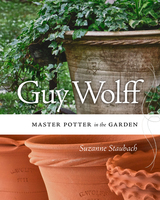 Guy Wolff: Master Potter in the Garden
Suzanne Staubach
University Press of New England, 2013 If you mention Guy Wolff to a serious gardener, that gardener will almost certainly admit to either owning a Guy Wolff flowerpot or coveting one. Wolff’s pots—some small and perfect for a sunny windowsill, others massive and just right for a favorite outdoor spot—are widely considered to be the epitome of gardenware. Their classical proportions, simple decoration, and the marks of Wolff’s hands all combine to make plants look their best. His pots possess an honesty and liveliness that machine-made flowerpots lack. Wolff is probably the best-known potter working in the United States today. In gardening circles, he is a highly revered horticultural icon; gardeners flock to his lectures and demonstrations. His work also appeals to lovers of design and fine arts: visit the personal gardens of landscape designers, and you will see Guy Wolff pots. Step inside the gates of estate gardens, and you will see Guy Wolff pots. Yet he is a potter’s potter. He’s a big ware thrower, a skill few have today. He thinks deeply about what he calls the architecture of pots and the importance of handmade objects in our lives. Whether you are a longtime collector of Wolff’s pots, anxious to buy your first one, or simply intrigued by the beauty and practicality of hand-crafted goods in our fast-paced era, you’ll want to add this richly illustrated book to your library.
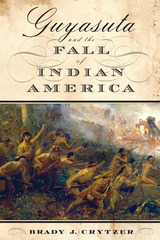 Guyasuta and the Fall of Indian America
Brady J. Crytzer
Westholme Publishing, 2013 A History of the Influential Seneca Leader Who Fought to Maintain Indian Sovereignty During the Bitter Wars for North America
Nearly a century before the United States declared the end of the Indian Wars, the fate of Native Americans was revealed in the battle of Fallen Timbers. In 1794, General Anthony Wayne led the first American army— the Legion of the United States—against a unified Indian force in the Ohio country. The Indians were routed and forced to vacate their lands. It was the last of a series of Indian attempts in the East to retain their sovereignty and foreshadowed what would occur across the rest of the continent. In Guyasuta and the Fall of Indian America, historian Brady J. Crytzer traces how American Indians were affected by the wars leading to American Independence through the life of one of the period’s most influential figures. Born in 1724, Guyasuta is perfectly positioned to understand the emerging political landscape of America in the tumultuous eighteenth century. As a sachem of the vaunted Iroquois Confederacy, for nearly fifty years Guyasuta dedicated his life to the preservation and survival of Indian order in a rapidly changing world, whether it was on the battlefield, in the face of powerful imperial armies, or around a campfire negotiating with his French, British, and American counterparts. Guyasuta was present at many significant events in the century, including George Washington’s expedition to Fort Le Boeuf, the Braddock disaster of 1755, Pontiac’s Rebellion and the Battle of Bushy Run in 1763, and the Battle of Oriskany during the American Revolution. Guyasuta’s involvement in the French and British wars and the American War for Independence were all motivated by a desire to retain relevance for Indian society. It was only upon the birth of the United States of America that Guyasuta finally laid his rifle down and watched as his Indian world crumbled beneath his feet. A broken man, debilitated by alcoholism, he died near Pittsburgh in 1794.
Supported by extensive research and full of compelling drama, Guyasuta and the Fall of Indian America unravels the tangled web of alliances, both white and native, and explains how the world of the American Indians could not survive alongside the emergent United States.
 Guys Like Me: Five Wars, Five Veterans for Peace
Messner, Michael A
Rutgers University Press, 2019 Over the last few decades, as the United States has become embroiled in foreign war after foreign war, some of the most vocal activists for peace have been veterans. These veterans for peace come from all different races, classes, regions, and generations. What common motivations unite them and fuel their activism?
Guys Like Me introduces us to five ordinary men who have done extraordinary work as peace activists: World War II veteran Ernie Sanchez, Korean War veteran Woody Powell, Vietnam veteran Gregory Ross, Gulf War veteran Daniel Craig, and Operation Iraqi Freedom veteran Jonathan Hutto. Acclaimed sociologist Michael Messner offers rich profiles of each man, recounting what led him to join the armed forces, what he experienced when fighting overseas, and the guilt and trauma he experienced upon returning home. He reveals how the pain and horror of the battlefront motivated these onetime warriors to reconcile with former enemies, get involved as political activists, and help younger generations of soldiers.
Guys Like Me is an inspiring multigenerational saga of men who were physically or psychically wounded by war, but are committed to healing themselves and others, forging a path to justice, and replacing endless war with lasting peace
Guys Like Us: Citing Masculinity in Cold War Poetics
Michael Davidson
University of Chicago Press, 2003 Guys Like Us considers how writers of the 1950s and '60s struggled to craft literature that countered the politics of consensus and anticommunist hysteria in America, and how notions of masculinity figured in their effort. Michael Davidson examines a wide range of postwar literature, from the fiction of Jack Kerouac to the poetry of Gwendolyn Brooks, Frank O'Hara, Elizabeth Bishop, and Sylvia Plath. He also explores the connection between masculinity and sexuality in films such as Chinatown and The Lady from Shanghai, as well as television shows, plays, and magazines from the period. What results is a virtuoso work that looks at American poetic and artistic innovation through the revealing lenses of gender and history.
Gwich'in Athabascan Implements: History, Manufacture, and Usage According to Reverend David Salmon
Thomas A. O’Brien
University of Alaska Press, 2011 The most detailed and well-illustrated study of material culture for any northern Athabascan language group to date, Gwich’in Athabascan Implements reproduces pre- and early post-contact tools that are historically important to the Athabaskan people. A long-term collaboration between anthropologist Thomas O’Brien and Athabascan elder David Salmon, this volume provides more than one hundred one-to-one sketches of a wide variety of implements, many of which are no longer commonly found in use.
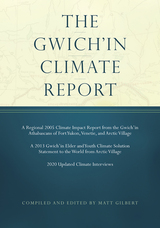 The Gwich’in Climate Report
compiled and edited by Matt Gilbert
University of Alaska Press, 2022 A regional climate impact and adaptation report from the Gwich'in Athabascans of Interior Alaska, The Gwich’in Climate Report is a compilation of transcribed interviews between Matt Gilbert and northern Alaska Gwich’in Athabascan community members, elders, hunters, and trappers. The book explores Gwich’in insight and wisdom about ecology, climate, and the drastic effects of climate change on their landscapes and culture.
These interview subjects are at a “ground zero” of climate change, and their voices are largely absent from popular research on and discussion of the topic. Their traditional knowledge of Arctic flora and fauna, forestation, landforms, meteorology, airstream behavior, and river hydrology makes a significant contribution to the documentation of climate change. In addition, Gilbert bridges the Gwich’in worldview and that of Western science by including factual substantiation and citations that corroborate key observations in the Gwich’in transcripts.
A text that matters for its cultural and historical significance—as well as its potential impact on the way science and policy are conducted in rural Alaska and on public lands—TheGwich’in Climate Report will be of interest to residents of and stakeholders in the communities it represents as well as researchers concerned with on-the-ground conditions of ecosystems and Indigenous peoples most directly affected by climate change.
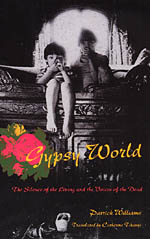 Gypsy World: The Silence of the Living and the Voices of the Dead
Patrick Williams
University of Chicago Press, 2003 For many of us, one of the most important ways of coping with the death of a close relative is talking about them, telling all who will listen what they meant to us. Yet the Gypsies of central France, the Manuš, not only do not speak of their dead, they burn or discard the deceased's belongings, refrain from eating the dead person's favorite foods, and avoid camping in the place where they died.
In Gypsy World, Patrick Williams argues that these customs are at the center of how Manuš see the world and their place in it. The Manuš inhabit a world created by the "Gadzos" (non-Gypsies), who frequently limit or even prohibit Manuš movements within it. To claim this world for themselves, the Manuš employ a principle of cosmological subtraction: just as the dead seem to be absent from Manuš society, argues Williams, so too do the Manuš absent themselves from Gadzo society—and in so doing they assert and preserve their own separate culture and identity.
Anyone interested in Gypsies, death rituals, or the formation of culture will enjoy this fascinating and sensitive ethnography.
Gyrators, Simulated Inductors and Related Immittances: Realizations and applications
Raj Senani
The Institution of Engineering and Technology, 2020 This book provides comprehensive coverage of the major gyrator circuits, simulated inductors and related synthetic impedances. It offers a thorough review of research in this field to date, and includes an exceptionally wide range and number of circuit examples, along with their relevant design equations, limitations, performance features, advantages and shortcomings. The book provides useful information for academics wishing to keep up-to-date with developments in the design of gyrators and other related synthetic impedances, and can also be used as a reference guide by electronics engineers looking to select appropriate circuits for specific applications.
|
|

